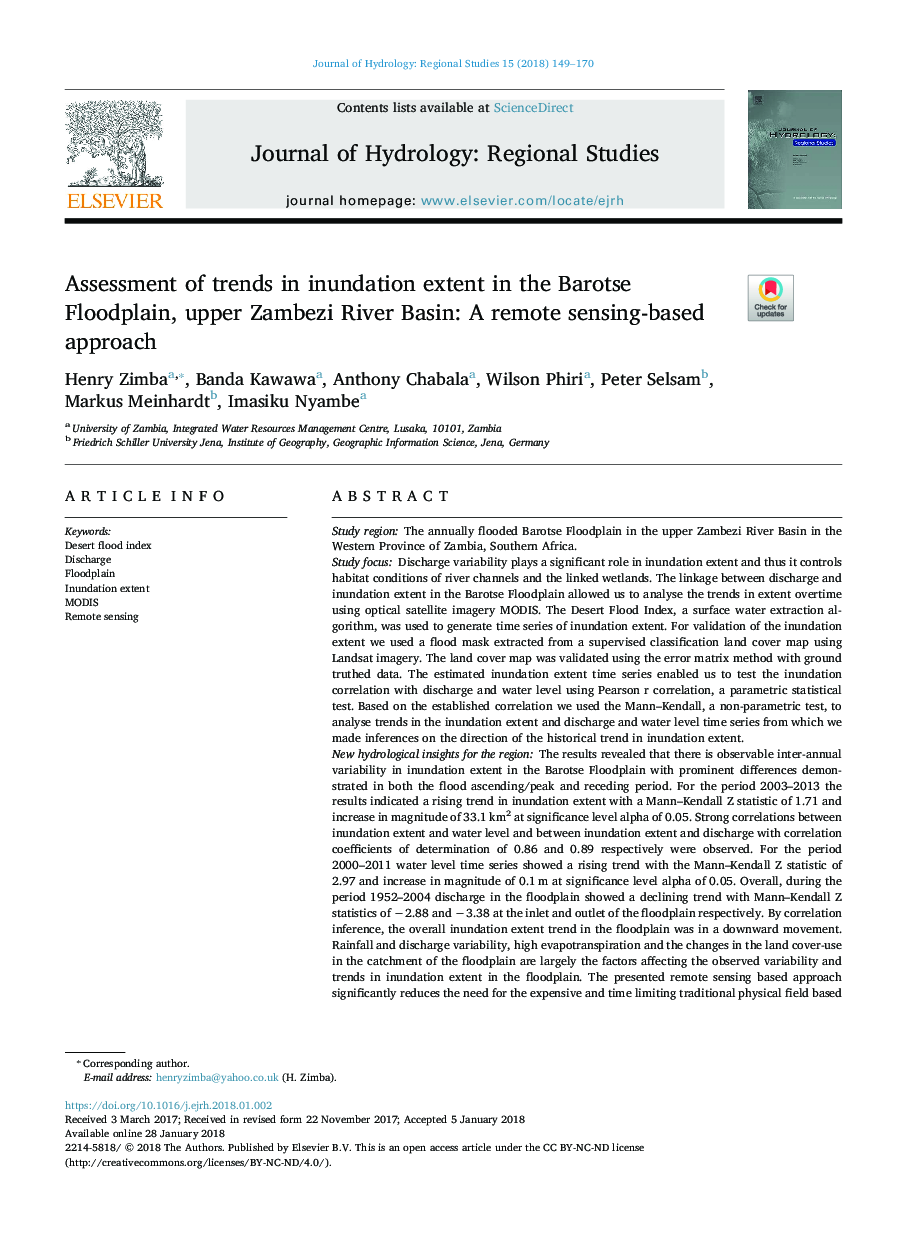| Article ID | Journal | Published Year | Pages | File Type |
|---|---|---|---|---|
| 8862890 | Journal of Hydrology: Regional Studies | 2018 | 22 Pages |
Abstract
The results revealed that there is observable inter-annual variability in inundation extent in the Barotse Floodplain with prominent differences demonstrated in both the flood ascending/peak and receding period. For the period 2003-2013 the results indicated a rising trend in inundation extent with a Mann-Kendall Z statistic of 1.71 and increase in magnitude of 33.1â¯km2 at significance level alpha of 0.05. Strong correlations between inundation extent and water level and between inundation extent and discharge with correlation coefficients of determination of 0.86 and 0.89 respectively were observed. For the period 2000-2011 water level time series showed a rising trend with the Mann-Kendall Z statistic of 2.97 and increase in magnitude of 0.1â¯m at significance level alpha of 0.05. Overall, during the period 1952-2004 discharge in the floodplain showed a declining trend with Mann-Kendall Z statistics of â2.88 and â3.38 at the inlet and outlet of the floodplain respectively. By correlation inference, the overall inundation extent trend in the floodplain was in a downward movement. Rainfall and discharge variability, high evapotranspiration and the changes in the land cover-use in the catchment of the floodplain are largely the factors affecting the observed variability and trends in inundation extent in the floodplain. The presented remote sensing based approach significantly reduces the need for the expensive and time limiting traditional physical field based wetland inundation mapping methods that form a limitation for achieving progress in wetland monitoring especially in open and sparsely gauged floodplains such as the Barotse.
Related Topics
Physical Sciences and Engineering
Earth and Planetary Sciences
Earth-Surface Processes
Authors
Henry Zimba, Banda Kawawa, Anthony Chabala, Wilson Phiri, Peter Selsam, Markus Meinhardt, Imasiku Nyambe,
